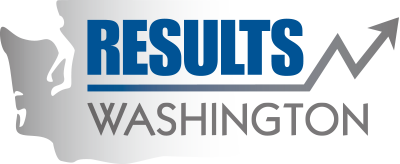Archived: Toxic diesel soot pollution emitted from mobile sources
The Washington Department of Ecology identifies diesel exhaust as the toxic air pollutant most harmful to Washington’s citizens. It causes or contributes to asthma, heart and lung diseases, and cancer. More than four million people live or work close to transportation corridors where they are exposed to high levels of diesel exhaust.
Diesel emissions standards for new on-road and off-road engines, combined with less polluting fuels, have significantly reduced diesel emissions statewide. However, diesel engines have a long life. Older “legacy” diesel engines continue to produce significant amounts of pollution for decades. Pollution from these legacy engines creates one of the greatest health risks to our citizens. Tens of thousands of these legacy engines, especially on-road trucks, locomotives and construction equipment, should be replaced or retrofitted with pollution controls.
New clean diesel engines with advanced emission control technologies and improved fuels are reducing diesel pollution faster than projected. Ecology estimates that in 2014, diesel engines emitted 5,436 tons of diesel particulate matter into the air statewide. This represents a 15.6% reduction since 2011 and a 45% reduction since 2005. Even though diesel pollution is decreasing on average in Washington, significant concentrations exist in hotspots, especially in and around urban areas, ports and transportation corridors. These hotspots continue to adversely impact vulnerable and general populations. They remain an important health issue that needs to be addressed.
For the Washington school bus fleet, more than 50% now have factory installed, advanced pollution controls, 40% have retrofit pollution controls, and only about 5% have no emissions controls.
Statewide, Ecology installed retrofit pollution control technologies on more than 9,500 public sector trucks, transit buses, and port cargo-handling equipment.
Assisted by the Department of Ecology, Puget Sound ports have invested millions of dollars to reduce emissions from their operations by installing retrofit pollution control technologies and idle reduction technologies. They are replacing older diesel vehicles,equipment and engines with newer, and cleaner ones. These projects have substantially reduced diesel particulate matter from port related operations. By 2011, emissions of diesel particulate matter had been reduced by 22% per ton of cargo moved when compared to 2005.(See the Northwest Ports Clean Air Strategy and related documents at http://portseattle.org/environmental/air/seaport-air-quality/pages/nwports-clean-air.aspx )
School buses
Our first priority is to protect school children from toxic diesel emissions inside and outside school buses. We’ve retrofitted more than 6,000 school buses with pollution control technologies that reduce toxic emissions by 50% or more from each school bus. More than 5,000 additional buses have factory installed, advanced pollution control technologies. The remaining old buses that can’t be retrofitted are eligible for a grant to help defray the costs of replacing the bus with the newest, least-polluting engine technology. We have also provided and installed technology that helps reduce engine idling
Emergency response vehicles
For emergency response vehicles, the department has funded and supported projects to install pollution controls on 175 vehicles and idle reduction technologies on 150 vehicles. Idle reduction technologies provide multiple benefits. Not using engines to power lights, heating/cooling systems, and on-board equipment saves money on fuel and maintenance. Shutting off the vehicle engine at the response scene reduces harmful fine particulate pollution, eliminating exposure to both first responders and the people they are assisting. It also cuts greenhouse gases and black carbon that contribute to climate change.
Ports
Large numbers of diesel engines operate in close proximity and create toxic diesel hotspots around our ports. Ocean-going vessels, locomotives, harbor craft, drayage and long-haul trucks, and cargo-handling equipment operate around the clock and most use diesel engines.
Electric shore power for cruise ships and other ocean-going vessels allows ships to turn off large main engines while “hoteling” at the dock. Power is available for all ship-board activities while reducing pollution exposures to passengers, dockworkers and the nearby community.
Both the ports of Tacoma and Seattle have installed some shore power at their facilities, but more can be done.Some other projects that are reducing diesel pollution at ports include:
- Installing technology that reduces idling of switch locomotives and cargo-handling equipment.
- Replacing old drayage trucks with newer cleaner models.
- Improving terminal efficiency by reducing gate wait times and load/unload times for trucks.
- Replacing old unregulated engines on cargo-handling equipment, harbor vessels and switch locomotives with newer cleaner engines.
- Installing exhaust retrofits, such as particulate filters, on cargo-handling equipment.
- Replacing diesel fueled refrigeration generators with grid electricity.
- Improving maintenance on diesel engines.
Other projects
A number of other initiatives and projects are underway to reduce diesel pollution, including:
- Requiring all diesel fuel and new diesel vehicles sold in Washington to meet stringent federal standards that substantially reduce diesel pollution.
- Requiring diesel fleets in the Vehicle Emissions Check areas (parts of King, Pierce, Snohomish, Clark and Spokane counties) to perform emission tests on their vehicles.
- Retrofitting public and private fleets, such as refuse collection, construction, public utility and transit fleets, with exhaust controls and idle reduction technologies.
- Replacing diesel fueled boilers at a community center with clean burning propane boilers.
- Installing electrical grid system hookups for commuter locomotives to reduce engine idling.
- Replacing diesel on-road trucks with LNG powered trucks.
- Replacing diesel fueled orchard heaters with clean burning propane heaters.
- Funding scientific studies that further our understanding of the health impacts of diesel pollution.
There are a number of things that you can do to reduce diesel pollutants, such as:
- Avoid unnecessary engine idling by simply shutting off the engine.
- Install idle reduction or fuel economy technologies that reduce fuel and maintenance expenses. Money saved from reduced expenses can help pay for these technologies. For more details visit EPA’s SmartWay website: http://www.epa.gov/smartway/forpartners/technology.htm
- Replace older, high polluting vehicles and engines with newer low polluting ones.
- Apply for Ecology’sClean Diesel Program grant funds to help pay for technologies that reducediesel emissions. For more details visit Ecology’s Clean Diesel Grant website: http://www.ecy.wa.gov/programs/air/grants/dieselgrants.htm
